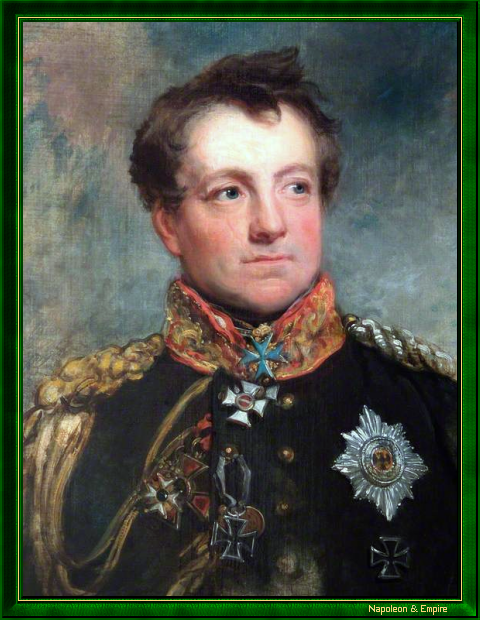Count

August von Gneisenau was born in Schildau, Saxony[Sachsen], on October 27, 1760.
In 1778, he joined Dagobert Sigismund von Wurmser's Austrian hussar regiment as a cadet.
In 1786, Gneisenau joined the Prussian army.
From 1807, under the direction of Gerhard Johann David von Scharnhorst, he took part in the Prussian army's renovation effort, part of the state reforms initiated by Baron Charles Henri de Stein (Heinrich Friedrich Karl Reichsfreiherr vom und zum Stein).
Stein's downfall in the face of Napoleon's hostility led to Gneisenau's resignation in July 1809.
In 1813, Gneisenau returned to service as generalmajor in the army of Silesia, commanded by General Gebhard Leberecht von Blücher. He became chief of staff after Scharnhorst's death in June 1813. He was one of the main Allied commanders during the second part of the Saxon campaign, followed by the Campaign in Northeast France.
Appointed Generalleutnant after the battle of Leipzig, he was even supreme commander of the Prussian army for two weeks after the battle of Laon.
During the Hundred Days, on the evening of the battle of Ligny, when Bluecher was reported missing, it was Gneisenau who took the decision to move the army northwards, regardless of its supply lines. This move enabled the Prussians to intervene on the Waterloo battlefield in time for victory the following day. A month later, Gneisenau was promoted to infantry general.
He was promoted to Generalfeldmarschall on June 18, 1825.
He died of cholera in Posen [Poznań]on August 23, 1831. He is buried in a mausoleum built by the Prussian kings at Sommerschenburg, in the Sommersdorf district of Börde, Saxony-Anhalt [Sachsen-Anhalt].
"August Neidhardt von Gneisenau (1760-1831)" by George Dawe (St James's, Westminster 1781 - Kentish Town 1829).

Count Claus Schenk von Stauffenberg, the main protagonist of the July 20, 1944 assassination attempt on Adolf Hitler, was Gneisenau's great-grandson.